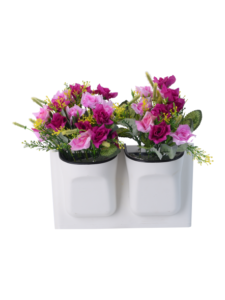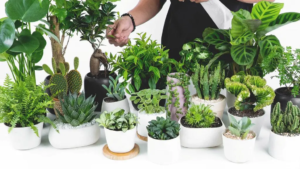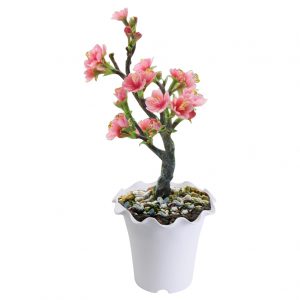Growing plants in plastic pots is a popular choice due to their convenience, aesthetics, and affordability. However, to ensure healthy plant growth in plastic pots, special care is needed, as these pots have distinct characteristics compared to clay or ceramic pots. Here are some tips to help you effectively care for plants in plastic pots.



1. Choosing the Right Plastic Pot
When selecting a plastic pot, make sure it is the right size for your plant. A pot that is too small will constrict the plant’s roots, limiting its growth. Conversely, a pot that is too large can lead to waterlogging, as the large volume of soil retains moisture longer, preventing it from draining properly. Additionally, choose a pot with drainage holes at the bottom to ensure excess water can escape, preventing root rot.
2. Controlling Watering
Plastic pots tend to retain moisture better than other types of pots, so watering must be carefully controlled. Overwatering can lead to waterlogging, causing root rot and fungal diseases. To check soil moisture, insert your finger about 2-3 cm into the soil; if it feels dry at that depth, it’s time to water. Water in the morning to allow the plant to absorb moisture and for excess water to evaporate throughout the day.
3. Ensuring Quality Potting Soil
The soil in plastic pots should have good drainage and be nutrient-rich. Use a pre-mixed potting soil or create your own mix with components like worm castings, organic compost, sand, and a bit of peat moss to improve drainage and moisture retention. The soil should be refreshed annually to ensure the plant continues to receive adequate nutrients.
4. Adjusting Light Conditions
Plastic pots typically do not retain heat well, so plants can be affected by the surrounding temperature. Place the plastic pots in locations where they receive the appropriate amount of light according to the plant’s needs, avoiding direct sunlight if the plant is sensitive to strong light. For indoor plants, ensure they receive indirect light from windows or use grow lights if necessary.
5. Regular Fertilization
Plants in pots, especially plastic ones, require regular fertilization since the nutrients in the soil are limited. Use organic fertilizer or water-soluble synthetic fertilizer every 4-6 weeks, depending on the plant type and its growth stage. Be careful not to over-fertilize, as this can shock the plant and damage the roots.
6. Checking for and Preventing Pests and Diseases
Plastic pots can retain moisture for extended periods, creating a favorable environment for certain pests and diseases. Regularly inspect the leaves, stems, and soil for early signs of pests, such as yellowing leaves, brown spots, or the presence of insects. Use safe pest control methods like light soap sprays, neem oil, or organic insecticides to protect the plants.
7. Repotting When Necessary
When a plant outgrows its current pot or when roots start to emerge from the drainage holes, it’s time to repot the plant into a larger container. Repotting provides the roots with more space to grow, ensuring the plant continues to thrive.


Caring for plants in plastic pots requires attention to factors like watering, light, nutrition, and the plant’s growth space. By following these guidelines, you can help your plants grow healthy and strong in plastic pots, creating a vibrant and lively green space in your home.



